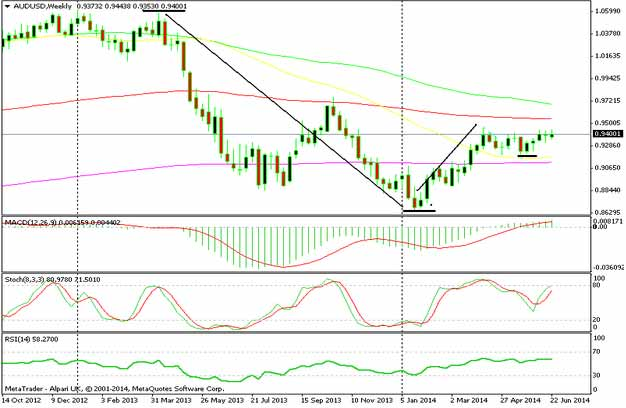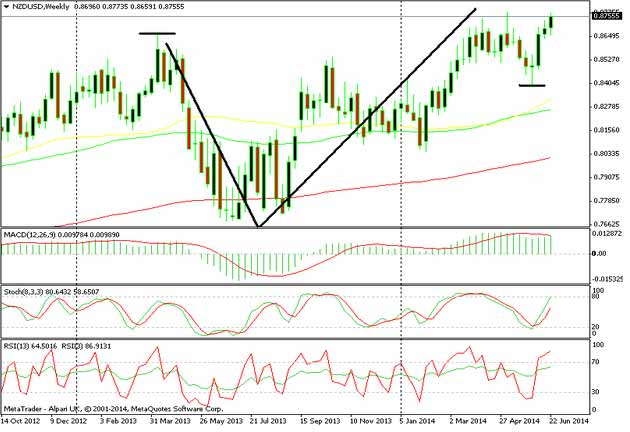What Is Hedging in Trading and How Do You Use It?
Hedging is an important factor of trading. Hedging in trading helps to secure profit and reduce losses. It is essential to hedge properly when trading; if hedging is not done properly you could end up losing more money than you ever imagined. In this article, we will take you through the process of hedging and how you can hedge trades effectively.
What is Hedging?
Hedging in Trading is the process of opening a position that goes against an existing one. A hedge is a position on an investment that is opened to offset probable losses on that investment. This is like having insurance on that investment; once you hedge that investment, when a sudden price reversal happens, the consequences are reduced.
Hedging is a simple risk management technique that helps to reduce sustainable losses, protecting your losses in times of doubt.
Why Hedge A Position?
There are two main reasons that you should hedge a position as a trader:
- Profit Protection: to protect the positive PnL (Profit & Loss), when you are trading and in a profitable position, you can open a hedge and add a second position in the opposite direction. Thus, when the market makes an unexpected turn against your initial trade, making it non-profitable, you will still earn profit from the hedge. You would incur some loss from the initial trade, but you would lose less you would if the hedge was not placed.
- Short-term profits: a price market might be moving against your trade in the short-term. If you open a trade and the price falls following weak earnings support, you might believe that the trade would become profitable in the future; you might want to leave the primary trade open while you open a new position that would yield profit in the short term.
Advantages of Hedging
As we have now covered the basics of hedging, let us look at some of the benefits or advantages of hedging in trading:
- Provides loss protection: if the market turns against a position you have hedged, this position would cover some of the loss, ensuring that you do not lose the entire equity of the initial trade.
- Secures profit: any profit that is already made within the market can be protected by hedging that position.
- Relieves Pressure and Stress: since part of the exposure from the initial trade is hedged, you would lose less, which means that you would not need to worry about the market going against you.
- Allows Increased Exposure: once you have reduced risks through hedging, you can increase the exposure for a trade knowing full well that if the market goes against you, you will not lose everything you have invested.
- Saves time: when trading, you usually have to take out time to track an open position in case of changes in price. Hedging in trading ensures that even if the price does change, you would not need to open, close, or make any changes to the trade.
- Allows you to withstand volatility: during periods of extreme fluctuations and volatility, which would have forced you out of the market before, you can use hedging to counter the effects, leading to more profit.
- Provides long- and short-term gains: if you have a long-term market position, and you want to take advantage of a short-term price movement acting against your long-term goal, you can simply hedge that position, creating a different trade alongside the long-term trade. This gives you the chance to open two trades at the same time and take advantage of price movements in either direction.
Disadvantages of Hedging
Although hedging in trading is a good strategy, there are disadvantages that you should be familiar with:
- Not beneficial to short term strategies: hedging is a strategy that helps you take advantage of short-term changes in the market. It is not, however, a good strategy for day traders who only make short-term trades.
- Eats into your profit: irrespective of the fact that hedging helps reduce loss if the market goes against you, it also means that if a market favours an open position that is hedged, it cuts into your profit, reducing a risk that has not come to play.
- Can cause loss from the spread: since hedging a trade means opening a second position, a spread is taken from both trades. This means that if the market does not move, there is no need for a hedged trade, meaning that the spread is lost. Although with many brokers, there is no cost attached to hedging, the spread means that you would lose money if the market does not move.
Example of Hedging Trading
The following charts show how you can use the hedging technique.
AUS/USD weekly chart showing a strong downtrend
In the preceding chart, it is clear that the AUD/USD pair is on a strong downtrend of about 2,100 pips in the weeks trade.

In the preceding chart, it is clear that the AUD/USD pair is on a strong downtrend of about 2,100 pips in the weeks trade.

The preceding AUD/USD chart shows an uptrend higher than the previous decline. As we can see, in the second trend, after a retrace of the daily and weekly charts, the best option available was to buy NZD/USD and to be on the safe side, take a short position on the AUD/USD.
If all of the currency pairs fell, AUD (the Australian dollar) would be more exposed while NZD (the New Zealand dollar) would have a comparatively small decline. If the decision was correct, the ZND would generate higher gains than losses made on the AUD, which was short.
Hedging Trading Techniques
We have seen the importance of hedging in trading and how it is a strategy that traders should be aware of. This strategy has the power to increase your earnings within a short period of time and to improve your understanding of proper trading tactics.
Hedging against risk: perfect vs imperfect hedging
A perfect hedge is one that has two equal and opposite positions in the market. This simply means that gain and loss in one market are offset by gain and loss in another and the risk exposure to investors would be eliminated. At first, this may sound unreasonable as two opposite positions would offset one another, but this is a strategy used more often than you think. Traders can use this hedging technique in situations where they have long term holdings; they do not want to sell but are still expecting a short price reversal to happen. Every hedge is constructed as a perfect opposite to their holdings. This is difficult to implement in reality, but it is an idea that works.
However, an imperfect hedge is one that is used to partially offset a loss, with the exposure of the hedge being much smaller than that of the opposite holding. This type of hedge is very effective but does not remove all of the risks. Once it is properly set up, it eliminates a large part of the loss but not all of it. An imperfect hedge is used as a precaution when a trader is uncertain of the impact of any given market direction on their funds.
Just like the previous scenario with the perfect hedge, imagine having long-term holdings, but this time, you’re not sure whether a dip in price would occur, and if it does, you’re unsure how strong a fall it would take. You know that you could potentially make a profit with an imperfect hedge and are willing to take some risk, but you do not want to risk a high loss if the market makes an unexpected turn. You set up a hedge against your portfolio with less exposure; this way if the market continues to rise, you would have made some profit. However, if it drops, you have partly offset your loss.
The decision of whether to use a perfect or imperfect hedge is essential when managing your risks. If an imminent fall looks like it would almost certainly hit a particular market, then the best choice is a perfect hedge. However, if a trader takes a slight risk, usually when uncertain about the changes in a price reversal, then an imperfect hedge is a better choice. If the direction of a market is known, then hedging a trade would be an impediment on profit. Nobody knows the direction of a market, which is why hedges help you to manage risks appropriately.
How do Traders Hedge Using CFDs?
A CFD (contract for difference) is a popular type of derivative that allows you to trade on margins, which provides you with greater exposure to the global markets. When you trade CFDs, you do not buy the original asset; instead, you buy or sell units for a particular financial instrument depending on whether you feel the initial price will rise or fall.
Once you decide on what type of hedge you want to execute, then you open a CFD position, which opposes your holdings. You can hedge against your holding by simply purchasing opposing CFD contracts in the same markets. However, you can hedge directly against your holdings by opening a position inversely connected to your holdings, just like mining stocks in times of economic crisis. You should know that, if these positions move in the same direction, you have not hedged your trade and you stand a risk of increasing your losses.
Which markets can I hedge?
For some brokers, hedging is not possible; however, others have a wide range of markets to hedge. For those who do not offer the opportunity to hedge, you would have to close the existing trade and open a new one in the opposite direction.
Here are some of the markets you can simultaneously hedge if your broker allows it:
- GBP/USD
- NASDAQ
- Wall Street
- SP 500
- UK 100
- Gold
- GBP/EUR
- Silver
- EUR/GBP
- EUR/USD
Preparing Your Process When Hedging in Trading
Hedging in trading is a complicated process involving the use of two assets or securities that have a negative correlation.
Simply put, you hedge an investment by making another investment. Hedging is not a strategy for increasing your profit as a trader; it is, however, a risk management strategy that you must make use of while trading. If you have to avoid a certain amount of risk, you have definitely reduced the potential profits you can make in that trade.
Bottom line
The goal of hedging in trading is to reduce your exposure to risks in the market. Traders using this hedging technique use advanced financial instruments known as derivatives, which include futures and options. It is, therefore, possible to hedge against many types of assets, including stocks, currencies, indices, interest rates, and commodities. Take time to understand the principles of hedging as it is one of the best insurance policies you have while trading. Many traders, who have successfully mastered the art of hedging in trading, can testify to the fact that it has helped them in countless ways.
The information provided in this article is not intended as, and should not be constructed or understood as financial advice. The information provided here is not a substitute for financial advice from a professional who is aware of the facts and circumstances surrounding your personal situation.
The information provided in this article is accurate and well researched. However, Irrespective of any information contained in this content, nothing is a substitute for consulting your financial professional to address your needs. We expressly advise that you seek advice from a professional for more information. The two go hand-in-hand to make sure that you make the best decisions that will benefit you, when and where needed.











